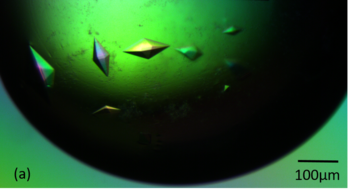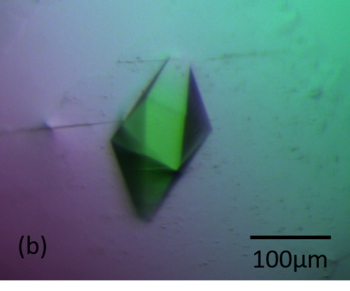Journal:IUCrJ:S2052252521005340
From Proteopedia
(Difference between revisions)

| Line 16: | Line 16: | ||
<scene name='88/884898/Cv/29'>The PIYDIN of the 31 peptide study</scene>; PIYDIN is colored in orange, antibody RoAb13 in cyan/green. We observe that, in the case of the PIYDIN part of the 31 peptide, <scene name='88/884898/Cv/26'>Pro8</scene> of the ligand is near (approximately within 3.5 Å of) tyrosines 98 and 100, and <scene name='88/884898/Cv/27'>Ile12 near Tyr98</scene> of the Light chain. <scene name='88/884898/Cv/28'>Tyr10 of the ligand comes near Asp61 and Arg64</scene> of the Heavy chain. <scene name='88/884898/Cv/30'>Asp11</scene> is only engaged in intra-peptide interactions, with Ile12 and Asn13. | <scene name='88/884898/Cv/29'>The PIYDIN of the 31 peptide study</scene>; PIYDIN is colored in orange, antibody RoAb13 in cyan/green. We observe that, in the case of the PIYDIN part of the 31 peptide, <scene name='88/884898/Cv/26'>Pro8</scene> of the ligand is near (approximately within 3.5 Å of) tyrosines 98 and 100, and <scene name='88/884898/Cv/27'>Ile12 near Tyr98</scene> of the Light chain. <scene name='88/884898/Cv/28'>Tyr10 of the ligand comes near Asp61 and Arg64</scene> of the Heavy chain. <scene name='88/884898/Cv/30'>Asp11</scene> is only engaged in intra-peptide interactions, with Ile12 and Asn13. | ||
| - | <scene name='88/884898/Cv/31'> | + | In the <scene name='88/884898/Cv/31'>PIYDIN only study</scene>, Ile9 (in hot pink) additionally comes near <scene name='88/884898/Cv/32'>Thr99</scene> (in deep sky blue) of the Light chain. The corresponding distance is ca. 5 Å for the 31 peptide structure (Ile9 is in orange; Thr99 in cyan). PIYDIN is colored in magenta, antibody RoAb13 in cyan/green. |
<scene name='88/884898/Cv/22'>Interacting residues between antibody and peptide PIYDIN. Both cases</scene>. | <scene name='88/884898/Cv/22'>Interacting residues between antibody and peptide PIYDIN. Both cases</scene>. | ||
Revision as of 13:02, 14 June 2021
| |||||||||||
This page complements a publication in scientific journals and is one of the Proteopedia's Interactive 3D Complement pages. For aditional details please see I3DC.


